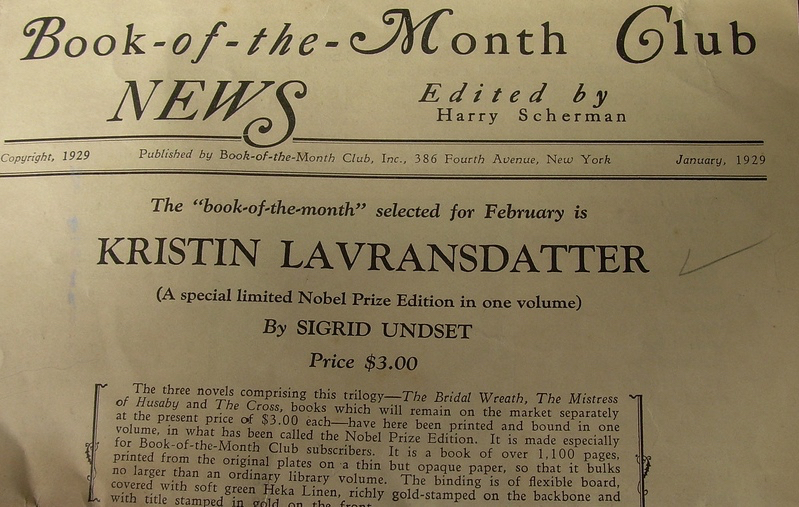
When freelance journalist Emma Marris was revamping her website, she wasn’t expecting career advice from the web developer she hired. “Do you have a newsletter, so I can put the sign-up link on your front page?” he asked her. She didn’t. “Well, you should—all the writers have them,” he responded. Marris signed up for a MailChimp account, and her newsletter was born.
Newsletters are nearly as old as the printing press, and they’ve found new life online. Email makes it easy for writers to ping their readers with their recommended readings, latest thoughts, and links to their recent articles. Marris uses the platform to send updates about new pieces and public appearances, such as her recent TED talk. They’re also a way to reward your readers with more material.
“Your most loyal readers will sign up for your newsletter—it’s a sort of extra thing to give people who care about what you do,” says Eric Holthaus, Slate’s resident meteorologist. Holthaus frequently writes about climate change, and his daily newsletter, Today In Weather & Climate, gives readers his insider take on the latest news as it relates to weather, from coverage on California’s Blue Cut fire to the similarities between forecasting elections and hurricanes.
There are a zillion ways to reach readers—Twitter, Facebook, Tumblr, blogs, Instagram, YouTube, Snapchat—but here’s why a newsletter may be the best career tool of all.
Promote Yourself: “It Is about You”
Newsletters are an economical and effective way to help you stay in touch with your reader base. Self-promotion may not be at the top of writers’ list of favorite tasks, but like it or not, it’s become part of the job. “It’s uncomfortable to a lot of us because this is not what we signed up for; I signed up to write stories, not to groom the Emma Marris brand,” says Marris. “But you can’t just keep your head down and write stories; you have to promote yourself.” Getting eyes on your work can open the door to more work in the future.
Staying in touch with your audience is especially critical for freelance journalists, who publish in many outlets. In the last few months, Marris has had pieces in National Geographic, The New York Times, Nature, and Orion. “If you’re a fan, how do you find me? How do you know where to go to see what I’m publishing?” she asks.
Don’t be afraid to sound like yourself in your newsletter, Yong says. “People signed up for that, so it is about you.”
That was the motivation for Ed Yong, science writer at The Atlantic, to get started with his newsletter. Yong was a relatively early adopter; he started The Ed’s Up in March 2014, when he was a freelancer. “I was writing for a lot of different people at the time,” said Yong. “I wanted a place where I could just collect my own work.”
Newsletters make it easy to update your readers. Social media posts fade quickly, and few readers go out of their way to check writers’ personal websites to see what new things they’ve published—your mom may not even be up to date. Sending out a regular newsletter is a more lasting way to get your work in front of readers’ eyes. “A newsletter sits in an inbox, and will sit there until people want to engage with it,” says Yong.
It’s also more personal. Short social media blurbs often read like ads. Newsletters read more like a short blog post, written just for readers and delivered to their inboxes. According to longtime blogger Jason Kottke, blogging died around 2013. But the newsletter format preserves what was once appealing about blogs: voice, intimacy, and casualness. “[Newsletters] allow you to have some of the sensibility that blogs used to—very ‘me me me,’” says Yong. Don’t be afraid to sound like yourself in your newsletter, he says. “People signed up for that, so it is about you.”
If you’re uncomfortable with making your newsletter explicitly about you but still want to try writing a newsletter, focus your attention instead on what your expertise can do for others. In The Ed’s Up, Yong often showcases other writers’ recent work by linking to a handful of pieces he has liked, along with a pithy description. It’s a quick and easy way to give a nod to peers you respect and to nudge readers towards other good writing.
Making Time for Newslettering
Producing a newsletter requires a cost-benefit analysis. The ideal newsletter is easy to whip up without too much effort and is a quick and enjoyable read. Marris says she spends just two minutes on each mailing—not a bad investment to stay in touch with readers. She strives for “short short short—a picture, and maybe one or two sentences about the new piece, on the theory that if you’re interested enough in me to subscribe, you might think it’s fun to hear one little anecdote about the reporting.”
Yong saves time by drawing on resources he has ready. “It’s really simple,” he says. Yong estimates he spends about half an hour on his weekly email. “I just link to all my pieces from the previous week, with a little paragraph blurb to get people excited, then a list of my favorite things I’ve read that week.” Those links come from tweets or his blog’s link roundup. “If you can find ways of getting a lot of extra value out of that work for almost no effort, that’s gold,” he says.
Holthaus invests about 30 minutes a day for his 300-to-400-word daily issues. “Something someone can read in one to two minutes is ideal,” he says. Holthaus is also planning to use several issues of the newsletter for longer journalistic projects funded by his supporters on Patreon, so it’s an investment in future work. Plus, he says he values the opportunity to broadcast his thoughts without a publication being the gatekeeper: Pitching, editing, and posting all take precious time that is saved by directly contacting readers.
Measuring the benefits is trickier. Marris, Holthaus, and Yong all told me they have no established methods for gauging their newsletter’s efficacy or its contribution to their career. “I don’t see any direct way I can measure whether I’ve made money in fiscal year 2016 because I have this newsletter,” Marris says.
“If you’re providing a service people value, that’s a way to make your name a little more well known.” ~ Eric Holthaus
Yong says he’s convinced the newsletter helps him reach readers, even without a metric. “I can’t point to a specific instance where [The Ed’s Up] has led to a tangible benefit, but it definitely has,” says Yong. He says that The Ed’s Up may have helped in publishing his first book, I Contain Multitudes; when it came to talking with publishers, his 11,400 subscribers “made the prospect of a book more attractive—it was definitely a plus.”
Holthaus just started his newsletter in late July, so it’s early to look for direct benefits, but he says he can imagine the exposure could be useful later on. “If you’re providing a service people value, that’s a way to make your name a little more well known,” he says. That name recognition could land you work; maybe the next time you’re applying for a job or sending in a pitch, an editor will remember your name as the mastermind behind the great biotech newsletter they read last week.
How to Create a Newsletter

Feeling ready to start your own newsletter? Start with these steps:
Step 1: Pick a platform. Popular newsletter platforms include MailChimp and TinyLetter. Both are free, but TinyLetter allows up to 5,000 subscribers, whereas MailChimp begins charging if you have over 2,000 subscribers (a good problem to have!).
These free options work plenty well, but if you wanted more control over your email list, you could maintain your own mailing list and send messages directly from your email. If you want fancy features like pictures and templates, consider services such as Constant Contact that are geared towards marketing purposes.
Step 2: Decide on what kind of content you want your newsletter to include. You could go Marris’s route, sending out a blast whenever you publish something new. Or you could write in a regular interval, like sending weekly links or daily musings. Only you can decide what you’d like to produce and what your readers might like to receive.
Step 3: Get it out there. Tell your friends, Facebook fans, Twitter followers, coworkers and favorite barista about your newsletter. If you have a website, link to it there. Set it as your personal link on social media sites.
Newsletters gain readers through word of mouth, which is part of the reason they feel so intimate—there’s no central database or way to search TinyLetter, MailChimp, or newsletters in general. Don’t be shy about telling people about yours and encouraging your fans to forward it to their friends in case they’d like to subscribe, too.
Step 4: Give yourself three months to build a newsletter-writing routine. If a newsletter isn’t for you, that’s OK—better to spend that time on other projects! But if you find that your newsletter feels like a chore to crank out and still want to give it a shot, rethink your focus or change up the content you include. “The reason I stuck with [The Ed’s Up] is because it’s not a burden at all—it’s a vaguely enjoyable way to wile away half an hour,” Yong says. “Do the thing you have fun with.”

Jane C. Hu is a TON fellow sponsored by the Burroughs Wellcome Fund. She is a freelance writer based in Seattle, Washington. Her favorite stories usually involve brains, animal cognition, language, or the intersection of science and society. Her work has appeared in Slate (where she was an AAAS Mass Media Fellow), The Atlantic, Nautilus, and other publications. You can find her on Twitter @jane_c_hu.


